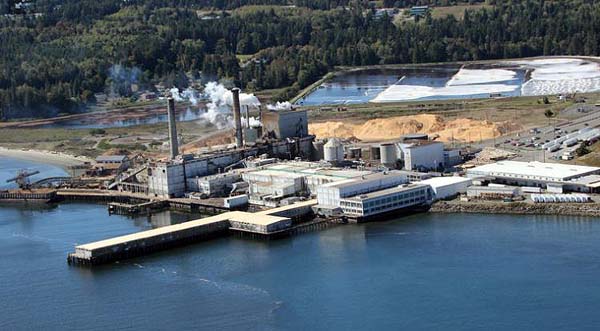Crown Port Townsend Paper Mill Cuts Emissions by At Least 50%
![]() Print this Article | Send to Colleague
Print this Article | Send to Colleague
According to a report this past week by The Port Townsend Leader, Port Townsend, Wash., USA, Jefferson County's largest industry – the Crown Paper (Ont., Canada) owned Port Townsend Paper Mill – has cut its greenhouse gas emissions by more than half compared with emission levels a decade ago. And mill officials hope a new compressed natural gas (CNG) project, to be completed this year, will reduce emissions even further.

When the state Department of Ecology first issued a statement in January about Democratic Governor Jay Inslee's promise to take the state's largest polluters of greenhouse gases to task – and changing rules on carbon limits – the Port Townsend mill wasn't listed as one of the dirty two dozen businesses that needed to clean up their act. But later, the mill was identified as one of the businesses that needed to comply with the new rules in 2020.
Felix Vicino, spokesperson for the mill, said mill officials hadn't expected to be on that list because they've already made improvements to their carbon emissions over the years, even before the current owners bought the mill in February 2015. In 2005, the mill estimated it emitted 151,000 metric tons of CO2, said Vicino. Today, it produces less than half of that.
"Our current emissions are about 61,300 metric tons, because we have already done much of the work to reduce them," Vicino said. "Through improved maintenance, operational efficiency improvements, and the boiler control improvements implemented, we have reduced over 59% in about 10 years."
Technically, the current standard for a mill the size of Port Townsend's is 100,000 metric tons of CO2 emissions. The mill is below that level. But the state is proposing to reduce that limit by 5,000 metric tons every three years. So by 2020, the limit would be 95,000 metric tons; then it would drop to 90,000 metric tons in 2023, until finally dropping to 70,000 metric tons.
Vicino said the mill does not expect its emissions to rise to that limit of 70,000 metric tons that the state is looking to set.
"The rule may never directly impact the mill. If our emissions never increase above the [70,000-metric-ton] threshold, we will not be in the program because we already did the work," Vicino said. "I think it's important to note, Port Townsend Paper voluntarily started doing things this rule targets because it makes sense to do so. We have already made huge improvements, and that's why we aren't directly listed," he said of the main list of businesses being targeted."
In August 2015, mill officials announced they were taking new steps to reduce the mill’s use of fossil fuels by becoming the first manufacturing plant in the state to start using CNG, which they said would also reduce costs and improve efficiency.
"CNG will result in significant emissions reductions, including greenhouse gas emissions, by converting to natural gas relative to oil, which will be displaced," according to a PTPC press release promoted by the mill. No specifics have yet been made available.


